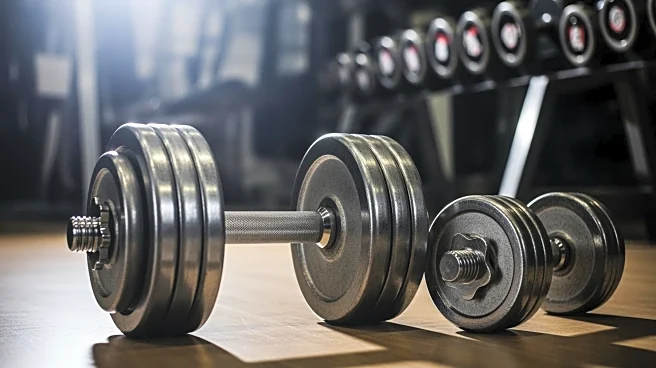What's Happening?
Tom Haviland, an Australian strongman, has gained significant attention for his unconventional training methods, which include lifting weights in his garage or on his farm using rusted plates and homemade
equipment. Joe Rogan has dubbed him 'possibly the strongest man alive,' a title that has sparked interest across the internet. Haviland's passion for strength training began in his childhood, where he spent most of his time outdoors, lifting logs and stones. Despite his growing popularity, Haviland remains modest, expressing uncertainty about appearing on Rogan's podcast, preferring a simple life away from the limelight.
Why It's Important?
Haviland's approach to strength training challenges conventional methods, highlighting the potential for alternative training environments to produce exceptional results. His story underscores the importance of adaptability and resourcefulness in physical fitness, potentially inspiring others to explore non-traditional training methods. The attention from Joe Rogan, a prominent figure in media, further amplifies Haviland's influence, potentially impacting the strongman community and fitness enthusiasts worldwide. This recognition could lead to increased interest in strongman competitions and alternative training techniques.
What's Next?
As Haviland continues to gain recognition, there may be opportunities for him to participate in more high-profile strongman competitions, potentially leading to sponsorships or collaborations with fitness brands. His unique training style could inspire new fitness programs or workshops focused on unconventional strength training methods. Additionally, the interest from Joe Rogan might open doors for media appearances, further increasing his visibility and influence in the fitness industry.
Beyond the Headlines
Haviland's story raises questions about the accessibility of fitness training, suggesting that effective strength training does not necessarily require expensive equipment or gym memberships. His success with homemade equipment and outdoor training could encourage a shift towards more sustainable and cost-effective fitness practices. This development may also spark discussions on the cultural significance of strength and physical fitness, particularly in rural and resource-limited settings.











